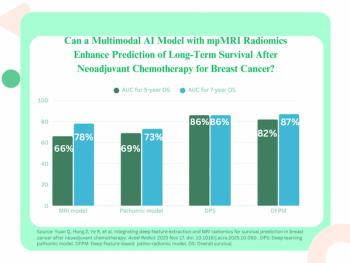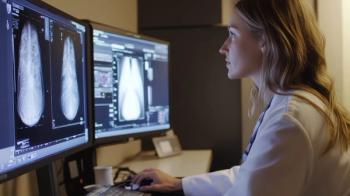
Hasty budget action spurs petition for delay
Organized coalition of imagers targets flimsy rationale behind Deficit Reduction Act
It had to have been an impulse. There were no hearings, no rumors, and no warnings-just a quick decision by a group of congressional conferees trying to create a budget.
Those budget conferees, who met behind closed doors last December as they put together the Deficit Reduction Act of 2005, were attempting to incorporate sustainable growth rate reductions that the Centers for Medicare and Medicaid Services had imposed for this year's Physician Fee Schedule. How were they going to fund the 4.4% SGR reduction set for 2006? Congress had intervened in each of the three previous years to roll back the SGR cut, and these conferees needed to find a way to do it again.
Well, they must have said, how about imaging services? It is no secret that in the past five years, imaging services have increased more than any other component of the Medicare Physician Fee Schedule.
MedPAC, in its report to Congress in March 2005, provided statistics documenting this growth. Between 1999 and 2003, while all physician services increased at a rate of 22%, imaging services experienced a 45% jump in payments. And the big ticket procedures (MR, nuclear medicine, and CT) grew at twice that pace.
The volume of imaging services provided to Medicare patients has grown by an average of 9% per year, compared with less than 2% for evaluation and management services and just over 4% for other medical procedures, according to MedPAC. Similarly, data compiled by the Blue Cross and Blue Shield Association demonstrate that between 1999 and 2001, its member plans experienced remarkable levels of growth in outpatient diagnostic imaging costs. The BCBSA estimates that health plan costs for outpatient x-ray services increased by 18%, while costs for CT and MRI services reportedly rose a staggering 45% and 47%, respectively, during a two-year period.
Thus, when the conferees decided to roll back the 4.4% SGR reduction and replace it with an overall freeze at the 2005 physician payment rates, they saw imaging as an area ripe for pruning. CMS advised the conferees that Medicare had already adopted a MedPAC recommendation regarding reductions in multiple imaging technical component procedures. But under the budget neutrality rules, no money had yet been removed from the overall fee schedule pie. That slice was transferred to the pool. So the first step for the conferees was easy. They simply exempted from budget neutrality treatment the multiple technical component cuts on contiguous body part MR, CT, and ultrasound studies. Voila, they had a Medicare budget cut.
How else could they make an easy cut? It's well known in the industry that the resource-based relative values methodology that make up the MPFS resulted in more favorable payments to physician offices and independent diagnostic testing facilities (IDTFs) than to hospitals, which under the ambulatory patient classification scheme provide similar technical component imaging services to outpatients. The result? Conferees took out the meat axe and required that payments made under the Medicare fee schedule for imaging services provided in physician offices and IDTFs be paid at the lesser of the fee schedule or APC rate. Screening and diagnostic mammography services were excluded.
But as the American College of Radiology has effectively argued in the months hence, in its zeal for cuts, the Congress effectively invalidated both the Medicare fee schedule and the APC payment methodologies. For radiologists performing MR, CT, and PET services, these decisions mean that technical component payments for services will be cut between 25% and 50%. There is a multiplier effect as well, as many payers base their payment schedule on Medicare reimbursement. Medicare cuts result in deep reductions in payments from private insurers as well.
The Congressional Budget Office estimates a savings of $2.8 billion over five years as a result of the DRA cuts. The overall budget bill takes $11 billion out of Medicare and Medicaid spending over the same five-year period. Amazingly, imaging took one-fourth of the hit, and, as the ACR has pointed out, this projection is a modest estimate. The real cuts in Medicare payments for these services could be as much as double the CBO estimate.
DEADLINE JANUARY
If Congress doesn't act by year-end, these cuts will go into effect in January. Rep. Joe Pitts has introduced the Access to Medical Imaging Act (HR 5704). The legislation imposes a two-year delay in the medical imaging payment cuts imposed by the DRA. More than 40 other members of the House have joined as cosponsors. Its counterpart in the Senate (S3794) was introduced by Senators Jay Rockefeller and Gordon Smith.
This stepped approach to rolling back the DRA cuts is a wise move. Rather than seek outright repeal and, thus, the need to come up with a way to recapture the entire $2.8 billion, the proponents of HR 5704 can hope that Congress will accept a smaller reduction in Medicare spending while giving the Government Accountability Office time to study the impact of the DRA cuts as requested by the moratorium sponsors.
When the health subcommittee of the House Energy and Commerce Committee held hearings in July on the cuts, it was clear that their impact is largely unknown. Imaging is growing; it's not known why that growth has been so rapid. Is it a good or bad thing? There has been little evidence presented that it is a bad thing at all. MedPAC chair Glenn Hackbarth and CMS senior official Herb Kuhn each confessed to the subcommittee that neither MedPAC nor CMS has any notion of the value of imaging services or the impact of the cuts on patient access to those services. The remaining speakers presented a fairly consistent front against the DRA cuts.
To fight the arbitrary cuts, radiologists, under the leadership of the ACR, have joined with others who provide nonhospital imaging services, including cardiologists, to support passage of HR 5704 and the two-year moratorium. Essentially, radiologists and cardiologists have agreed to a truce. Nary a word about self-referral has been uttered by anyone. Meanwhile, the ACR and representatives from the National Coalition for Quality in Diagnostic Imaging Services are arguing for action that could very well lessen the impact of self-referral. The two organizations are recommending that all providers of diagnostic imaging services comply with the quality standards that Medicare now imposes on IDTFs.
This is a prudent recommendation that would have the dual effect of eliminating poor quality providers and curtailing unnecessary utilization of services. But this can be accomplished, in part, without a new statute or CMS rulemaking. Under the existing CMS enrollment requirements for physician practices, many nonradiology physician practices should already be enrolling as IDTFs.
CMS requires enrollment as an IDTF if the diagnostic tests performed by the physician practice are not interpreted at the location where patients are treated. Countless nonradiology practices accept outside referrals, and they also contract for offsite interpretations by radiologists. If CMS enforced its own rules and insisted that Medicare carriers observe existing enrollment instructions, many physician offices would today be required to comply with the same quality requirements as IDTFs. This would constitute a major improvement without any new rulemaking.
CMS could also more rigorously enforce its Stark requirements. The agency has made it clear that in order for group practices to be in compliance with the Stark physician services exception, interpretation services for Medicare and Medicaid patients must be provided onsite at the physician practice. If CMS enforced this single rule against even one of the many current violators of this Stark requirement, it would send a major signal to the industry.
Will the DRA cuts be delayed? I think the chance that the delay will occur is better than even. The July hearing before the House Energy and Commerce Health Subcommittee propelled the initiative for a moratorium forward simply by revealing the slight foundation and lack of rationale for the arbitrary cuts.
But a delay will prompt only a temporary cease-fire in the ongoing war over imaging services. Only when the policymakers come to understand the evils of self-referral as the primary driver of increased utilization, and only when policymakers appreciate the need to impose quality standards on all providers of imaging services, will there be a reasonable chance to control the fastest growing component of MPFS payments.
Mr. Greeson is a partner in the healthcare group of Reed Smith LLP in Falls Church, VA. He can be reached at 703/641-4242 or
Newsletter
Stay at the forefront of radiology with the Diagnostic Imaging newsletter, delivering the latest news, clinical insights, and imaging advancements for today’s radiologists.

























